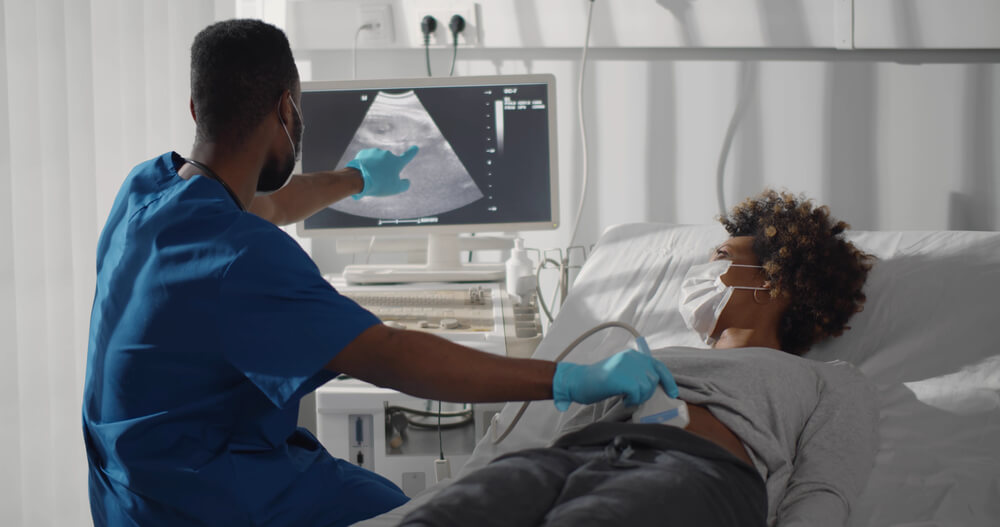More than any prenatal appointment, most future moms look forward to the first ultrasound during pregnancy. So you’ve taken the pregnancy tests, and it’s confirmed – you’ll have a baby soon. So, when is the best time to get the baby’s first ultrasound? What can you expect from the first ultrasound? In this article, you’ll learn everything you need to know about your baby’s first ultrasound, including the types of ultrasound examinations and what you can expect further along the journey.
Before jumping straight in, you’ll want to find a reliable ultrasound specialist. Check online and ask around for references and recommendations. This way, you’ll get the best care you can get for the entire family.
Without further ado, let’s find out the facts about the first ultrasound, when is your first ultrasound, and more.
The First Ultrasound: A Brief Overview
The “viability” or “dating” ultrasound is the first ultrasound. During the baby’s first ultrasound, the doctor checks for the fetal heartbeat. Also, the doctor will measure the baby’s length from “crown to rump.” Soon-to-be parents can learn a lot from the first ultrasound, including whether they are having a single baby, twins, triplets, or more. Often, you might get to see and hear the fetus’s heartbeat.
The first ultrasound is very helpful for women who have irregular menstrual cycles or women who missed a period after stopping birth control use. That’s because the first ultrasound helps women determine a more precise due date. The due date is crucial because it helps the medical professional track the baby’s development every month.
If you have any questions, concerns, or if you are just seeking a good healthcare specialist, we recommend someone like Dr. Francisco Jimenez.
When Do You Get Your First Ultrasound?

With all of this in mind, when do you get your first ultrasound? Typically, expecting parents can do the first ultrasound as early as five weeks during pregnancy. However, most medical professionals recommend that parents schedule the baby’s first ultrasound between the six and eight weeks of pregnancy.
Now that you know when is your first ultrasound, you may ask yourself, why are five weeks typically too early? The answer is fairly simple. At five weeks, things are tiny, so the medical professional will not be able to see too much on the ultrasound. Even six weeks can make accurate analysis challenging. But, in perfect conditions, when is your first ultrasound? In some cases, a doctor can check the fetus that early on. However, in most scenarios, more than five weeks are required.
The Types of Ultrasound Exams
During the earliest stages of pregnancy, a doctor may use a transabdominal ultrasound and a transvaginal ultrasound.
When it comes to the transabdominal ultrasound, the doctor uses a transducer wand to analyze the baby. The professional uses this device on the woman’s abdomen to send sound waves to her pelvis, resulting in an image on the screen. The transabdominal ultrasound exam is great to view and check the bladder, ovaries, and cervix during pregnancy.
On the other hand, the transvaginal ultrasound will give detailed and accurate measurements and the fetus’s heartbeat. This type of exam involves a probe transducer that the doctor inserts into the vagina to check the uterus up close. It can give details on the gestational sac growth as early as a week prior to being detectable on a standard transabdominal sonogram.
Some women are intimidated by the transvaginal ultrasound. Luckily, the procedure is quick and painless. You will need to lie down on the table with bent knees, and the feet might be placed in stirrups. Next, the doctor or ultrasound technician will insert the probe into your vagina. Although the process might be slightly uncomfortable, it’s pain-free. The probe will be covered safely with a gel and condom to aid comfort. In many offices, patients can see the image on the ultrasound machine.
Parents who choose prenatal genetic testing can have their following ultrasound at twelve to thirteen weeks of pregnancy. This ultrasound type is called the nuchal translucency screening, and it is optional. This ultrasound type helps check for any chromosomal disorders. Children with chromosomal disorders may have moderate to severe mental or physical challenges. Some of these disorders are:
- Trisomy 13
- Trisomy 21 (or Down Syndrome)
- Trisomy 18
During the genetic screening ultrasound, the expert will do an anatomical scan. Your doctor will check if all limbs are present and look for essential nasal bone, stomach, bladder, and brain structures. Finally, the doctor will check nuchal translucency or the fluid sack at the child’s neck. This sac contains lymphatic fluid, and its size may correlate to the likelihood that the baby may have a chromosomal disorder.
However, remember, the ultrasounds for anatomic abnormalities and genetic disorders become more precise later in pregnancy.
What Can You Expect from Baby’s First Ultrasound?
When do you get your first ultrasound? Wait for the sixth week of pregnancy. Now that you’re ready to go for your baby’s first ultrasound, what are some things you can expect from an appointment? More importantly, what will you find out during the first ultrasound?
Firstly, the baby’s first ultrasound will be a life-altering experience for both mom and dad. That’s when you hear the baby’s heartbeat for the first time!
The doctor will analyze the following measurements: the yolk sac, the gestational sac, and the fetal pole. If you’ve waited until the sixth week, the doctor can use the Crown Rump Length (CRL) to assist with age and growth. Apropo, the Crown Rump Length is among the best gestational age estimations in the early stages of pregnancy. Next, the doctor will perform an ultrasound to check the heart rate to pick up the fetus’s heartbeat. You will find out whether the baby’s heart rate is within a normal range or if there are possible complications. When the doctor gathers all the required measurements, there will be a clear picture of when the child was conceived and when you can expect the precise due date.
Overall, during the first appointment, the doctor will analyze the viability of the pregnancy, the fetal size, the fetal heartbeat, and whether there are single or multiple pregnancies.
Parents often receive pictures of the small embryo to cherish as a memory.
Beyond the Baby’s First Ultrasound

The initial ultrasound is thrilling, but the entire pregnancy journey is exciting. As a vital part of prenatal care, the mother’s and the baby’s health will be checked by a doctor throughout the following eight months.
As the months come and go, you can expect some of the following milestones during pregnancy. For example, the gender reveal. Expecting parents can find out the unborn baby’s gender in the second trimester, between the fifteenth week and the sixteenth. However, after you find out if you have a boy or girl, you’ll need to wait for another three to four weeks to get a detailed anatomy ultrasound. Typically, you can get this ultrasound during your eighteenth to the twentieth week of pregnancy.
As the fetus grows, parents will be able to get a sneak peek of the baby’s features. Many well-equipped clinics offer the latest 3D and 4D ultrasounds. A 4D image is like a 3D one, but the parents will see the baby moving.
Book an Appointment Now
At our clinic, the babyies and moms are our top priority. Our team of dedicated professionals will do everything in their power to give you the best results. Quality guaranteed. Give us a call today.


